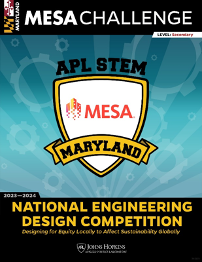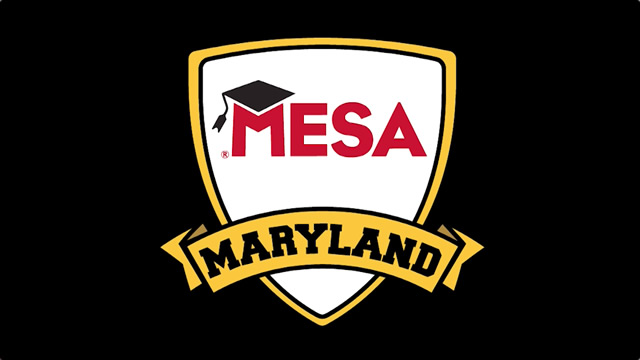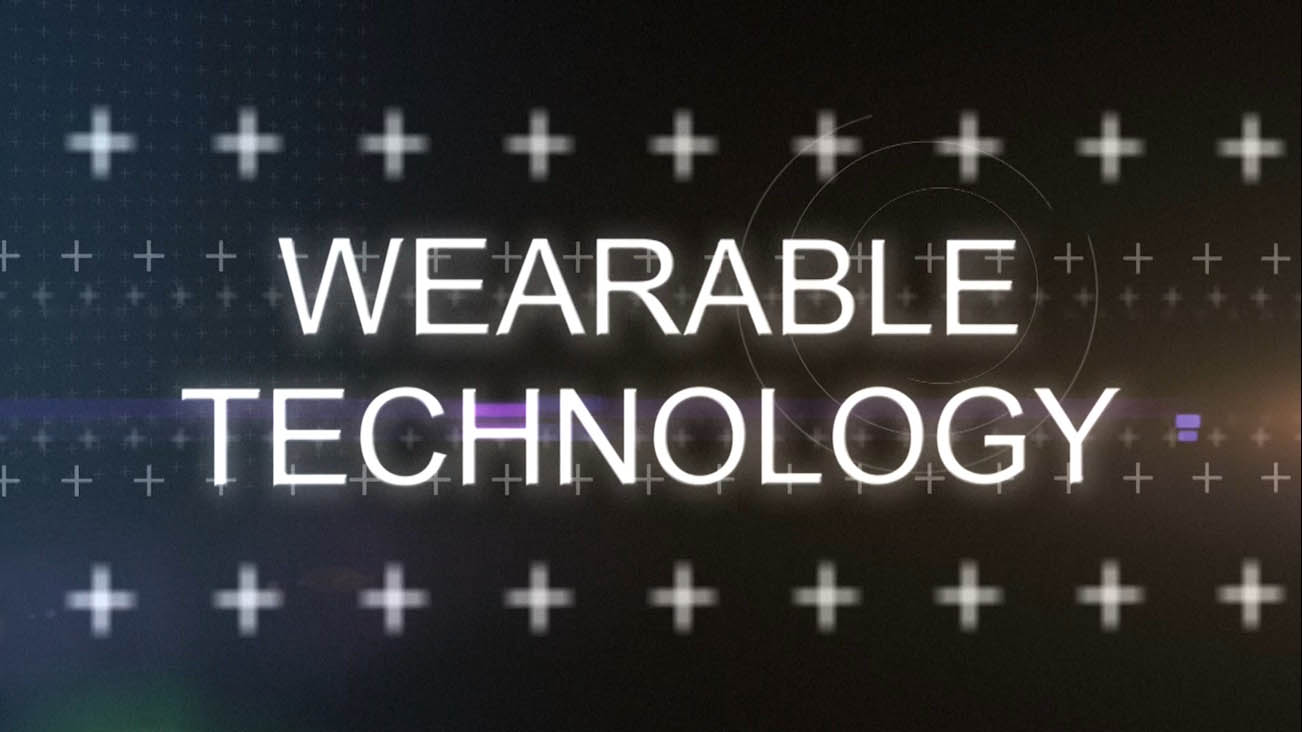MESA Clubs
Competitions
Overview
Maryland MESA strives to provide students in grades 3–12 with the opportunity to explore STEM through a fun, hands-on program. This STEM initiative:
- prepares students to enroll in and graduate from a two- or four-year college or university with a degree in a STEM field;
- targets students who are traditionally underrepresented in these fields—specifically, minority and female students; and
- helps students develop leadership skills, improve their academic performance, work as a team, and compete effectively.
Maryland MESA uses a project-based approach to teach participating students fundamentals of engineering and computer science. Student teams work on projects (called challenges) which are designed by APL and the National MESA organization to help students develop computer programming and engineering skills.
Throughout the academic year, students conduct research, iterate designs, and prepare to participate in competitions that demonstrate what they have learned through participation in the MESA program.
Winning teams from each Regional MESA Day are invited to compete at the Statewide MESA Day, an annual showcase and awards ceremony held in each MESA state, which provides students with the opportunity to design and build projects, win medals, learn by doing, and interact with each other as well as STEM professionals.
MESA Day is also a qualifying competition for the MESA USA National Engineering Design Competition held in June. The top middle and high school NEDC teams from each participating state’s MESA Day will continue competing against their fellow MESA students to obtain the coveted title of MESA USA Champion.
Click on the appropriate grade level below to see descriptions of the current MESA challenges.
NOTE ABOUT 2023-24 MESA Competitions:
For the 2023-24 MESA season, the Statewide MESA Day Showcase and Awards Ceremony will be held on May 4, 2024 at the Johns Hopkins Applied Physics Lab Campus in Laurel, MD.
All projects will be judged ahead of time. All challenge submissions for Statewide MESA Day will be due by 11:59pm on Friday, April 19th.
Regional MESA Days will be held during March and April. Each district’s respective Regional Coordinator will provide the exact date of their MESA Day showcase and awards ceremony, along with a due date for submissions for judging.
Teams that win first place at the Regional MESA Days will advance to the 2024 Statewide Maryland MESA Day Showcase and Awards Ceremony.
First Place winners from Statewide MESA Day for NEDC will advance onto the 2024 MESA USA National event held in June 2024. This year’s event will be held in San Diego, CA.
Elementary-School-Level Challenges
Storybook Theme-Park Ride Challenge

Students learn the engineering design process and some basic physics while exercising their creativity in this design-and-build challenge. Student teams design and make a functional model of a theme park ride based on a storybook of the team’s choosing. The ride must be designed to safely carry four “passengers” (one marble, two ping-pong balls, and one golf ball) through two consecutive test runs.
Theme: Students will draw inspiration from a favorite book to select the theme for their amusement park ride.
Challenge Components: While the heart of this engaging challenge is the functional model of an amusement park ride that students design and create, there is much more to this project. In addition to the model, teams will also create a presentation and display board. Each component of the competition is designed to show off their hard work, ingenuity, and creativity in a different way!
- Design and Construction: Entries will be scored on the design, construction, and function of the working model. The ride must be designed to safely carry four “passengers” (one marble, two ping-pong balls, and one golf ball) through two consecutive test runs. The ride must be made primarily of repurposed and upcycled materials.
- Presentation and Demonstration: Each team will produce a presentation describing the amusement park ride and the design process. The presentation provides judges with insight into each team’s approach to developing a solution to the challenge. During the presentation, students will also demonstrate that their ride can safely carry the passengers. The presentation component is a great way for students to show off their creativity!
- Poster: Each team will design a display board to showcase their work.
After registering in the Maryland MESA database, students will have access to the competition rules and requirements.
Community Clean-Up Challenge
During this challenge, students are going to become engineers and design the newest environmental superhero, Super Clean Machine! Super Clean Machine defends your community against trash. It has to fight off the trash villains, such as winds that toss trash into the environment and those pesky humans that use the environment as their trashcan (litter). In order for Super Clean Machine to help defend your community, it must be automated and generate its power from the environment, like the sun, wind, or water. It must have a movable conveyor belt to carry trash to the collection container. Super Clean Machine can collect trash from the land, water, or both.
Challenge Components: The goal of this challenge is to create a garbage-gobbling, litter-loving trash-collecting superhero to help clean up your community. Your trash collecting device can be created for land or water. You are required to have an automated conveyer belt to move the collected trash to a collection bin. You are required to incorporate an alternative energy source and programming element.
- Design and Construction: The team will utilize the engineering design process to create their Super Clean Machine. Judges will make sure that teams include all required elements.
- Presentation and Demonstration: The presentation will provide judges with insight into each team’s approach to developing a solution to the challenge. The presentation will also include a demonstration of the team’s Super Clean Machine and show how it collects trash.
- Poster: The poster will provide insight into the engineering design process and construction of the team’s Super Clean Machine. The team will provide sketches of each iteration and explain how it was improved.
After registering in the Maryland MESA database, students will have access to the competition rules and requirements.
PLANETARY LANDER: AN EXPANDING STRUCTURE CHALLENGE
The students’ mission for this project is to design a lander that allows astronauts to land successfully on another world! Using the engineering design process, students will build the most efficient lander for a successful landing from the highest height possible. That is, the final design should be as light as possible while protecting the astronauts during landing. The lander will be made of components that fit entirely inside a transport container of a specified size. Do you think you can land your astronauts safely on another world?
Challenge Components: The focus of this project is for students to design, build, and test their planetary lander. The team will make improvements to the design until they have a lander that can land their astronauts safely on another world, and fit entirely in a transport tube.
- Design and Construction: The students will utilize the engineering design process to create the most efficient lander that can safely land their astronauts on their chosen world.
- Presentation and Demonstration: The presentation will provide judges with insight into each team’s approach to developing a solution to the challenge. The presentation will also include a demonstration of the team successfully landing their structure.
- Poster: The poster will provide insight into the engineering design process and construction of the team’s lander. The team will provide sketches of each lander design iteration and explain how it was improved.
After registering in the Maryland MESA database, students will have access to the competition rules and requirements.
Wearable Technology Challenge
Technology is changing the way people stay healthy and get help when they are sick. Fitness trackers help people exercise and insulin pumps help people with diabetes. As engineers design and build new technologies, more and more wearable devices will be available to promote healthy habits and to help people stay healthy. In the not-so-distant future, wearable devices will have a huge impact on the health of many people and may even save lives. Teams tackling this elementary-school-level MESA challenge will design, build, and demonstrate a wearable device to help keep babies healthy!
Theme: Wearable Technology to Monitor Respiration in Infants
Challenge Components: The focus of this challenge is the students’ prototype of a device to monitor respiration in infants. However, there is a lot more to it than just a bunch of wires and switches. The presentation and display board will allow students to show off the hard work, ingenuity, and creativity they used to solve this challenge. In addition to demonstrating how well their prototype works, teams will discuss their approach to solving the challenge and describe their design process.
- Presentation and Demonstration: During the presentation the team will not only demonstrate how well their prototype works, but will also discuss their approach to solving the challenge and describe their design process.
- Poster: Each team will design a display board showcase their work.
After registering in the Maryland MESA database, students will have access to the competition rules and requirements.
Middle-School-Level Challenges
National Engineering Design Competition (NEDC) Challenge

The MESA USA NEDC teams will develop a device Designing for Equity Locally to Affect Sustainability Globally. Teams will employ human-centered design practices to engineer a solution. Teams must use a coding component as the main component of their design. Teams must use the United Nations Sustainable Development Goals (UN-SDGs) in a community-centered capacity for their project. Students will identify an issue dealing with inequity, engineer a solution, develop a prototype, and present their solution.
Theme: Designing for Equity Locally to Affect Sustainability Globally
Challenge Components:The components listed below will be used to assess the team’s implementation of a human-centered design approach, use of the engineering design process, and successful implementing a coding aspect in the prototype. Each component of the competition allows the team to shine in a different way!
- Design Proposal: The Design Proposal provides a brief, non-technical overview of the inspiration for the proposed solution. This short document should help the reader understand why this project is needed and what it is intended to accomplish. The design proposal can be used alone or as support for the other components of the competition.
- Academic Poster: The objective of the poster is to provide an overview of the project, highlight key points of the design process, discuss relevant testing and data collection, present the resulting prototype, and share recommendations for further development. Each team will display their poster to showcase their project.
- Technical Pitch: The objective is to highlight the Engineering Design Process. Focused on the technical elements of the event, such as how/why does it work, and what is the student's knowledge of the operation of the prototype.
After registering in the Maryland MESA database, students will have access to the competition rules and requirements.
Community Clean-Up Challenge
During this challenge, students are going to become engineers and design the newest environmental superhero, Super Clean Machine! Super Clean Machine defends your community against trash. It has to fight off the trash villains, such as winds that toss trash into the environment and those pesky humans that use the environment as their trashcan (litter). In order for Super Clean Machine to help defend your community, it must be automated and generate its power from the environment, like the sun, wind, or water. It must have a movable conveyor belt to carry trash to the collection container. Super Clean Machine can collect trash from the land, water, or both.
Challenge Components: The goal of this challenge is to create a garbage-gobbling, litter-loving trash-collecting superhero to help clean up your community. Your trash collecting device can be created for land or water. You are required to have an automated conveyer belt to move the collected trash to a collection bin. You are required to incorporate an alternative energy source and programming element.
- Design and Construction: The team will utilize the engineering design process to create their Super Clean Machine. Judges will make sure that teams include all required elements.
- Presentation and Demonstration: The presentation will provide judges with insight into each team’s approach to developing a solution to the challenge. The presentation will also include a demonstration of the team’s Super Clean Machine and show how it collects trash.
- Poster: The poster will provide insight into the engineering design process and construction of the team’s Super Clean Machine. The team will provide sketches of each iteration and explain how it was improved.
After registering in the Maryland MESA database, students will have access to the competition rules and requirements.
PLANETARY LANDER: AN EXPANDING STRUCTURE CHALLENGE
The students’ mission for this project is to design a lander that allows astronauts to land successfully on another world! Using the engineering design process, students will build the most efficient lander for a successful landing from the highest height possible. That is, the final design should be as light as possible while protecting the astronauts during landing. The lander will be made of components that fit entirely inside a transport container of a specified size. Do you think you can land your astronauts safely on another world?
Challenge Components: The focus of this project is for students to design, build, and test their planetary lander. The team will make improvements to the design until they have a lander that can land their astronauts safely on another world, and fit entirely in a transport tube.
- Design and Construction: The students will utilize the engineering design process to create the most efficient lander that can safely land their astronauts on their chosen world.
- Presentation and Demonstration: The presentation will provide judges with insight into each team’s approach to developing a solution to the challenge. The presentation will also include a demonstration of the team successfully landing their structure.
- Poster: The poster will provide insight into the engineering design process and construction of the team’s lander. The team will provide sketches of each lander design iteration and explain how it was improved.
After registering in the Maryland MESA database, students will have access to the competition rules and requirements.
Wearable Technology Challenge
Technology is changing the way people stay healthy and get help when they are sick. Fitness trackers help people exercise and insulin pumps help people with diabetes. As engineers design and build new technologies, more and more wearable devices will be available to promote healthy habits and to help people stay healthy. In the not-so-distant future, wearable devices will have a huge impact on the health of many people and may even save lives. Teams tackling this middle-school-level MESA challenge will design, build, and demonstrate a wearable device to monitor a specific indicator of health in infants.
Theme: Wearable Technology to Monitor Respiration in Infants
Challenge Components: The focus of this challenge is the students’ prototype of a device to monitor respiration in infants. However, there is a lot more to it than just a bunch of wires and switches. The presentation and display board will allow students to show off the hard work, ingenuity, and creativity they used to solve this challenge. In addition to demonstrating how well their prototype works, teams will discuss their approach to solving the challenge and describe their design process.
- Presentation and Demonstration: During the presentation the team will not only demonstrate how well their prototype works, but will also discuss their approach to solving the challenge and describe their design process.
- Poster: Each team will design a display board to showcase their work.
After registering in the Maryland MESA database, students will have access to the competition rules and requirements.
High-School-Level Challenges
National Engineering Design Competition (NEDC) Challenge

The MESA USA NEDC teams will develop a device Designing for Equity Locally to Affect Sustainability Globally. Teams will employ human-centered design practices to engineer a solution. Teams must use a coding component as the main component of their design. Teams must use the United Nations Sustainable Development Goals (UN-SDGs) in a community-centered capacity for their project. Students will identify an issue dealing with inequity, engineer a solution, develop a prototype, and present their solution.
Theme: Designing for Equity Locally to Affect Sustainability Globally
Challenge Components:The components listed below will be used to assess the team’s implementation of a human-centered design approach, use of the engineering design process, and successful implementing a coding aspect in the prototype. Each component of the competition allows the team to shine in a different way!
- Design Proposal: The Design Proposal provides a brief, non-technical overview of the inspiration for the proposed solution. This short document should help the reader understand why this project is needed and what it is intended to accomplish. The design proposal can be used alone or as support for the other components of the competition.
- Academic Poster: The objective of the poster is to provide an overview of the project, highlight key points of the design process, discuss relevant testing and data collection, present the resulting prototype, and share recommendations for further development. Each team will display their poster to showcase their project.
- Technical Pitch: The objective is to highlight the Engineering Design Process. Focused on the technical elements of the event, such as how/why does it work, and what is the student's knowledge of the operation of the prototype.
After registering in the Maryland MESA database, students will have access to the competition rules and requirements.
Community Clean-Up Challenge
During this challenge, students are going to become engineers and design the newest environmental superhero, Super Clean Machine! Super Clean Machine defends your community against trash. It has to fight off the trash villains, such as winds that toss trash into the environment and those pesky humans that use the environment as their trashcan (litter). In order for Super Clean Machine to help defend your community, it must be automated and generate its power from the environment, like the sun, wind, or water. It must have a movable conveyor belt to carry trash to the collection container. Super Clean Machine can collect trash from the land, water, or both.
Challenge Components: The goal of this challenge is to create a garbage-gobbling, litter-loving trash-collecting superhero to help clean up your community. Your trash collecting device can be created for land or water. You are required to have an automated conveyer belt to move the collected trash to a collection bin. You are required to incorporate an alternative energy source and programming element.
- Design and Construction: The team will utilize the engineering design process to create their Super Clean Machine. Judges will make sure that teams include all required elements.
- Presentation and Demonstration: The presentation will provide judges with insight into each team’s approach to developing a solution to the challenge. The presentation will also include a demonstration of the team’s Super Clean Machine and show how it collects trash.
- Poster: The poster will provide insight into the engineering design process and construction of the team’s Super Clean Machine. The team will provide sketches of each iteration and explain how it was improved.
After registering in the Maryland MESA database, students will have access to the competition rules and requirements.
PLANETARY LANDER: AN EXPANDING STRUCTURE CHALLENGE
The students’ mission for this project is to design a lander that allows astronauts to land successfully on another world! Using the engineering design process, students will build the most efficient lander for a successful landing from the highest height possible. That is, the final design should be as light as possible while protecting the astronauts during landing. The lander will be made of components that fit entirely inside a transport container of a specified size. Do you think you can land your astronauts safely on another world?
Challenge Components: The focus of this project is for students to design, build, and test their planetary lander. The team will make improvements to the design until they have a lander that can land their astronauts safely on another world, and fit entirely in a transport tube.
- Design and Construction: The students will utilize the engineering design process to create the most efficient lander that can safely land their astronauts on their chosen world.
- Presentation and Demonstration: The presentation will provide judges with insight into each team’s approach to developing a solution to the challenge. The presentation will also include a demonstration of the team successfully landing their structure.
- Poster: The poster will provide insight into the engineering design process and construction of the team’s lander. The team will provide sketches of each lander design iteration and explain how it was improved.
After registering in the Maryland MESA database, students will have access to the competition rules and requirements.
Wearable Technology Challenge
Technology is changing the way people stay healthy and get help when they are sick. Fitness trackers help people exercise and insulin pumps help people with diabetes. As engineers design and build new technologies, more and more wearable devices will be available to promote healthy habits and to help people stay healthy. In the not-so-distant future, wearable devices will have a huge impact on the health of many people and may even save lives. Teams tackling this high-school-level MESA challenge will design, build, and demonstrate a wearable device to monitor a specific indicator of health in infants.
Theme: Wearable Technology to Monitor Respiration in Infants
Challenge Components: The focus of this challenge is the students’ prototype of a device to monitor respiration in infants. However, there is a lot more to it than just a bunch of wires and switches. The presentation and display board will allow students to show off the hard work, ingenuity, and creativity they used to solve this challenge. In addition to demonstrating how well their prototype works, teams will discuss their approach to solving the challenge and describe their design process.
- Presentation and Demonstration: During the presentation the team will not only demonstrate how well their prototype works, but will also discuss their approach to solving the challenge and describe their design process.
- Poster: Each team will design a display board to showcase their work.
After registering in the Maryland MESA database, students will have access to the competition rules and requirements.



